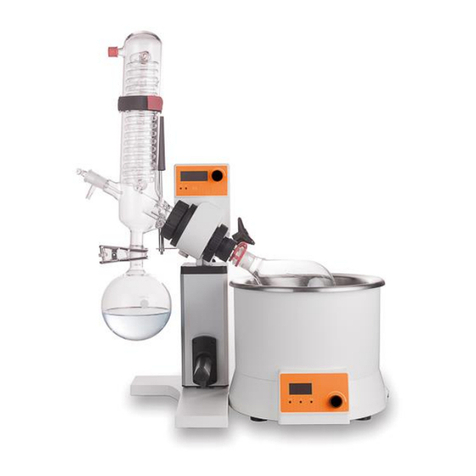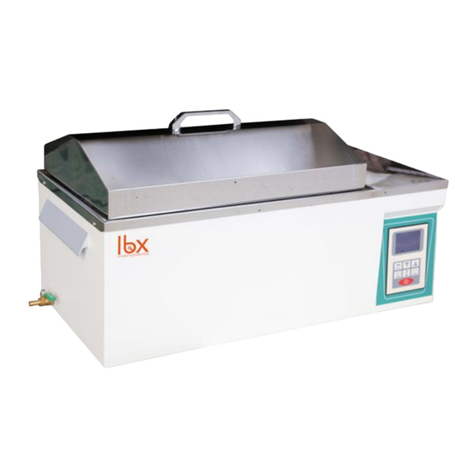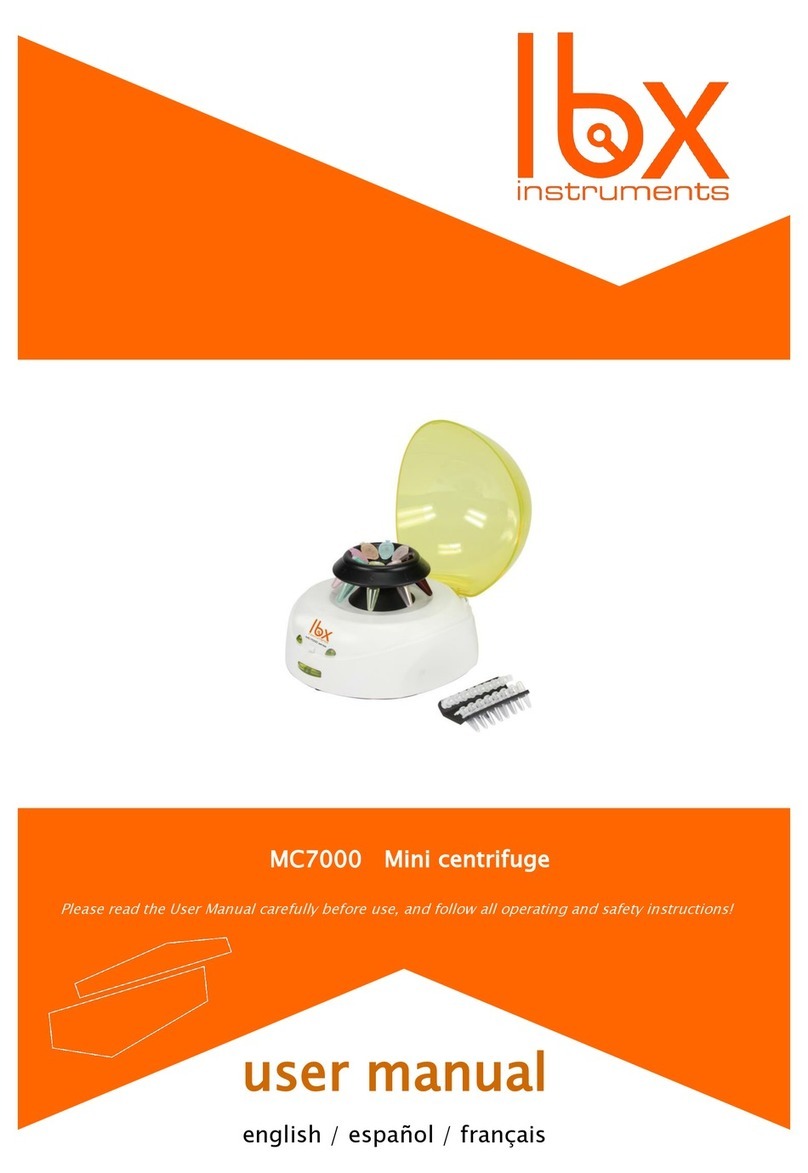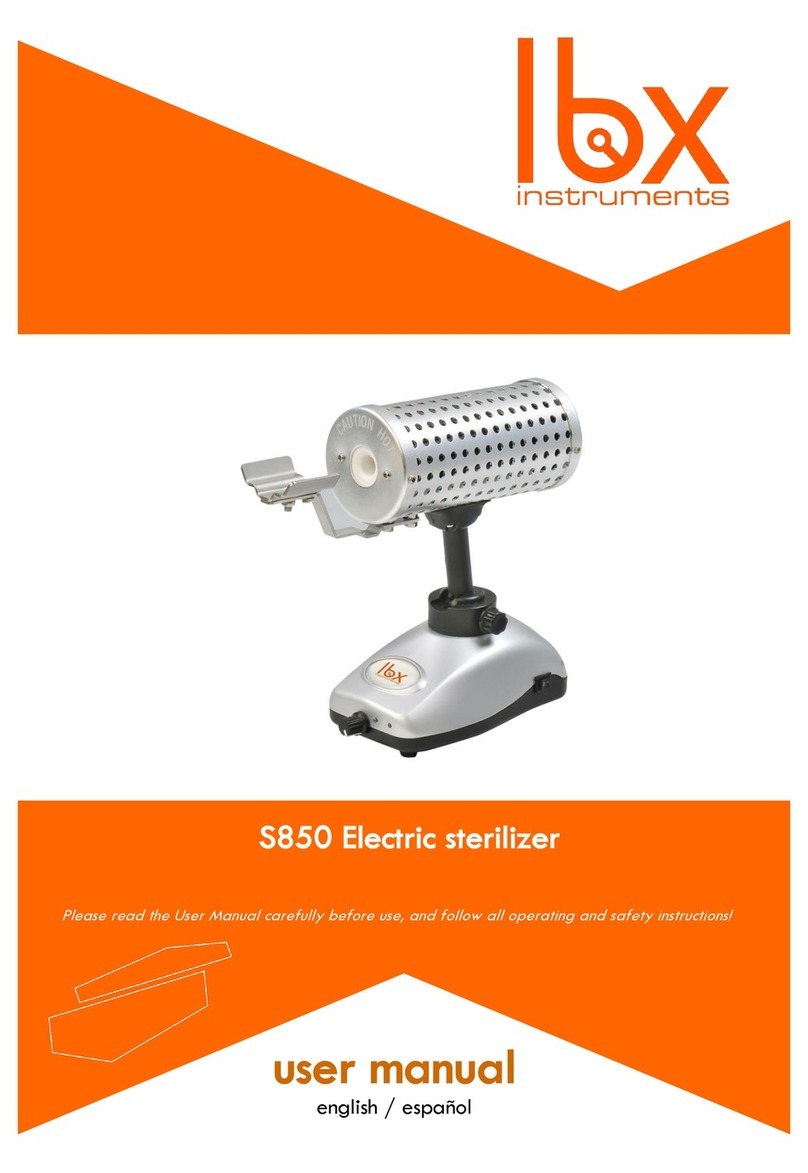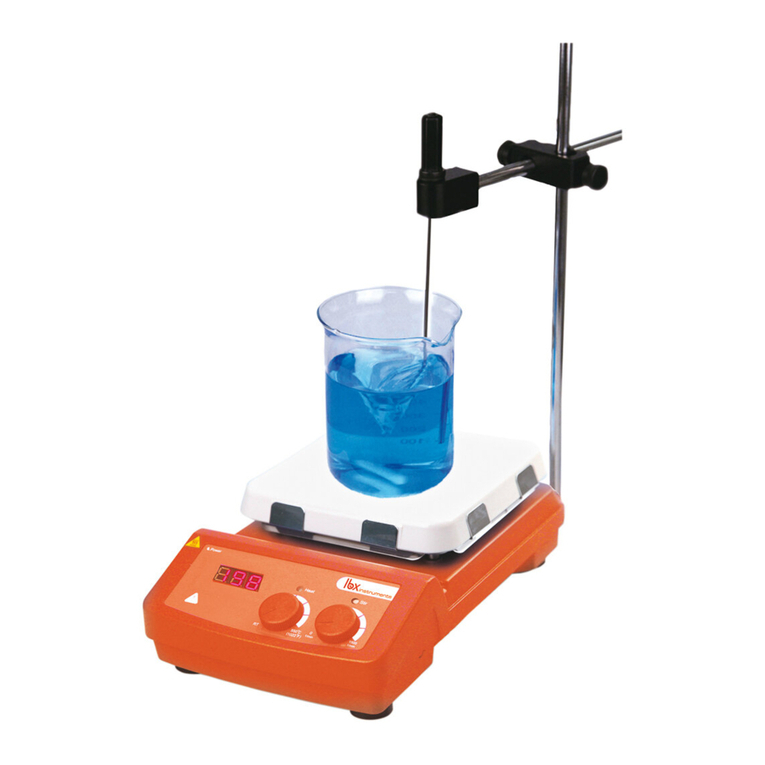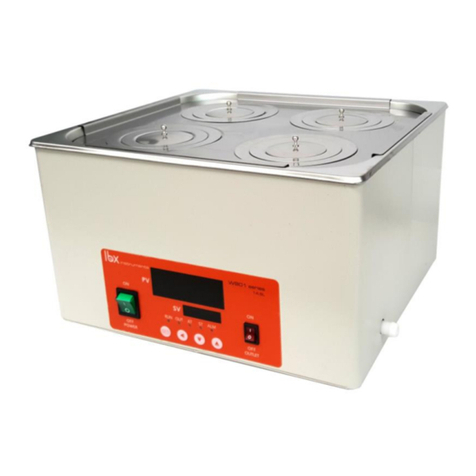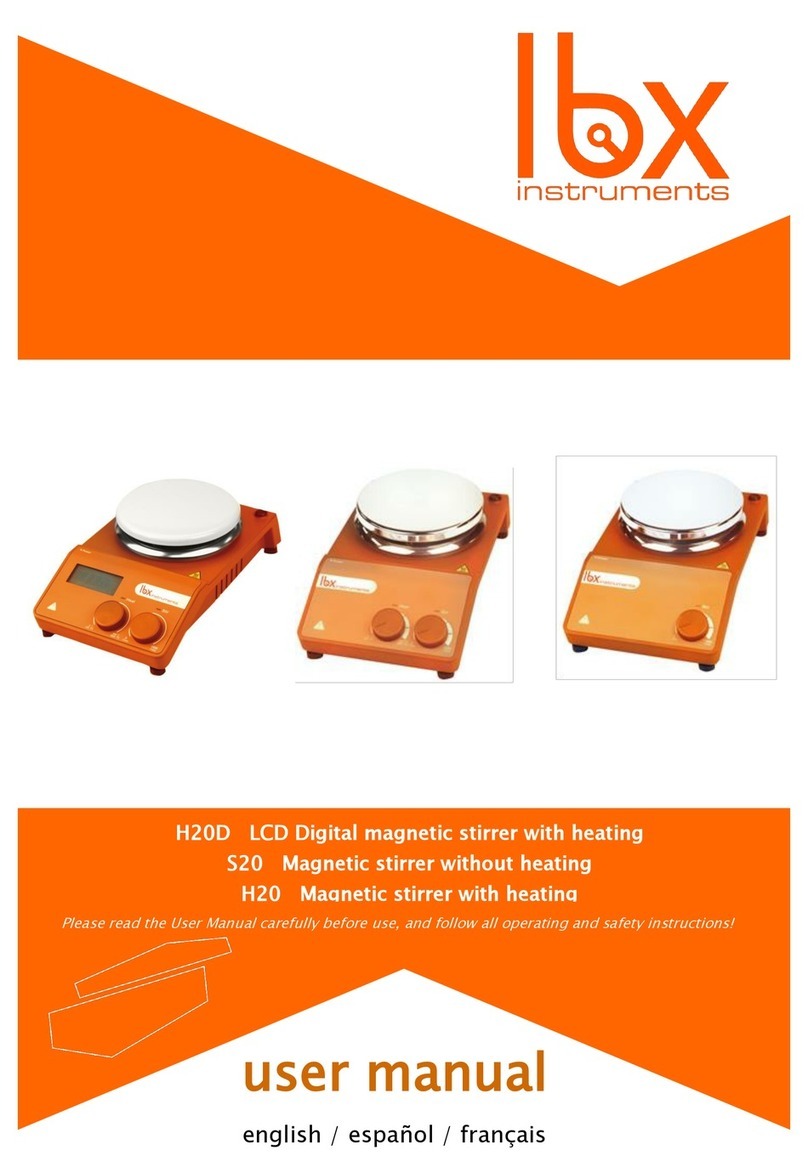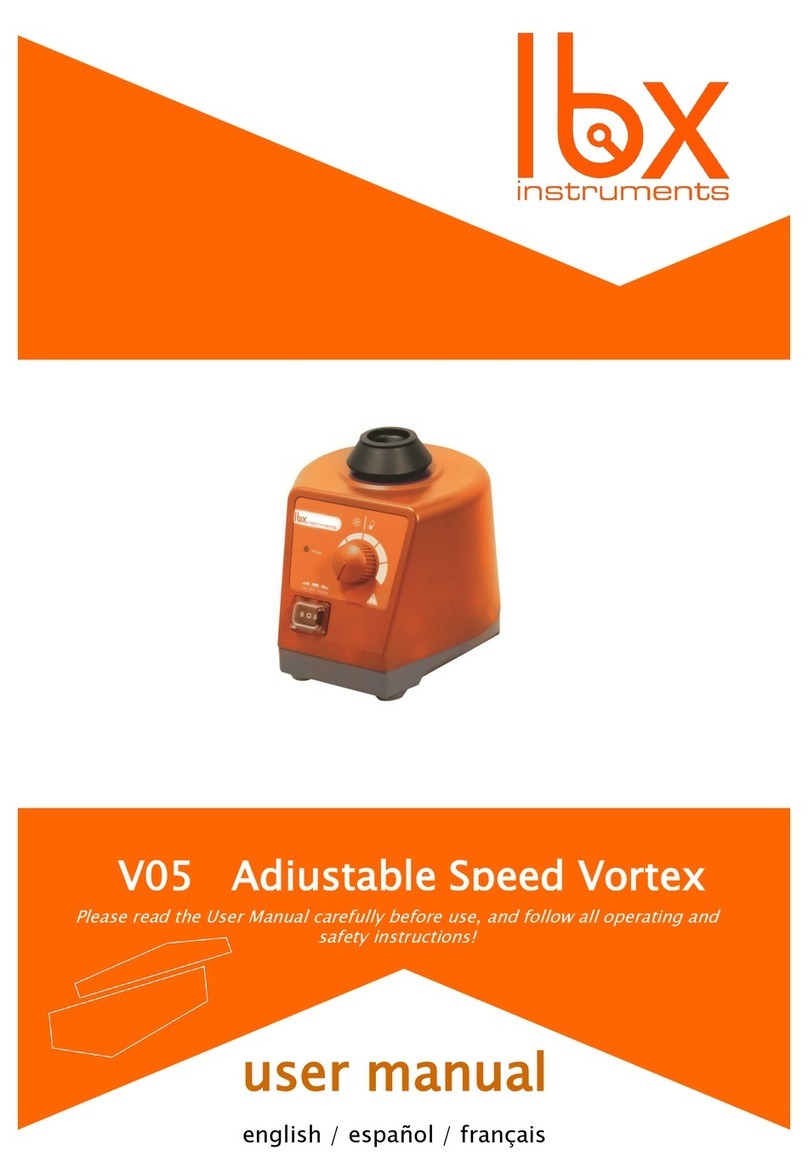
Note:
Make sure that the voltage required by the
equipment matches with electrical network.
Make sure the main power cord is not in
contact with the heating surface
If the equipment is damaged, please
disconnect it from the electrical network.
6.1 Heat setting
The device is controlled by digital temperature control technology, the maximum
temperature is 120℃.
Set the target temperature with the Tº button (4) and adjust it with the knob (2) to the target
value. For saving this parameter press the knob (2).You shall see the working temperature on
the screen (7). The device will start with the heating function
6.2 Timer setting
The device can work in accordance with the timing mode or continuous operation mode.
By default, this option will remain inactive, the device will work continuously until it’s
turned off manually. In order to work with
specific periods of time, proceed as follows:
To set the timing mode, press the timer button (3), (the time display area will be
flashing)(8) and will show the last setting, by default will be “00:00”.
Rotate the parameter setting knob (2) to set the target time (min), press the
parameter setting knob to save the selected option. On the timing screen (8), the
countdown will be displayed.
During operation, motion can be stopped at any time by pressing the
speed/timer control knob. If the knob is pressed again, motion and timer countdown
will restart. When the timer reaches zero, the unit will stop automatically.
To set the continuous mode: Press the time switch button (3), the characters in time
display area will be flashing, make sure the setting time is “00:00”, press the
parameter setting knob (2) to save the changes and the timer will be disabled.
Note: The working temperature needs to be set before the timer.






